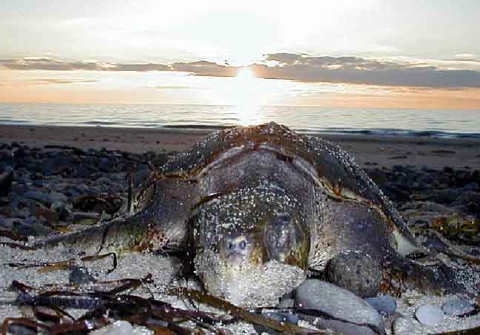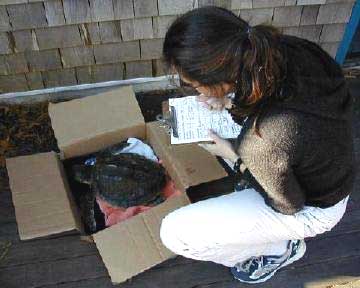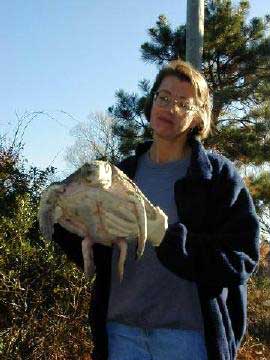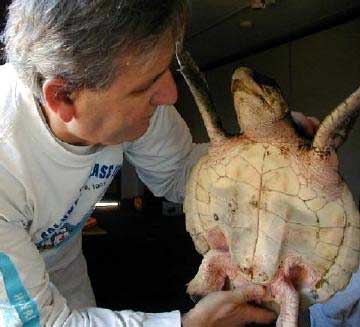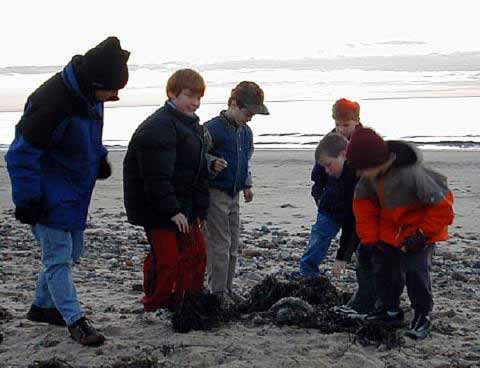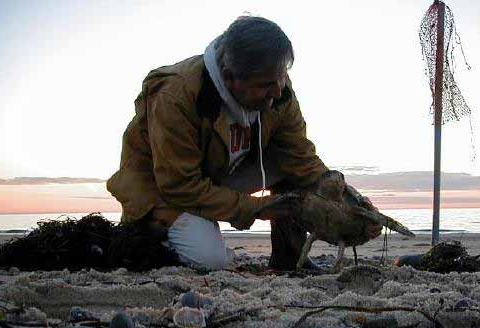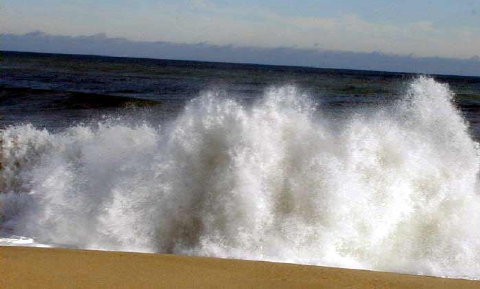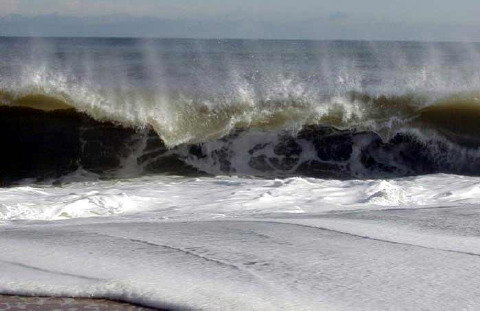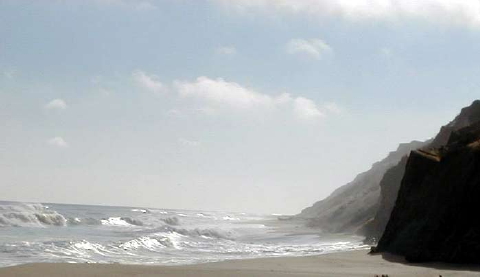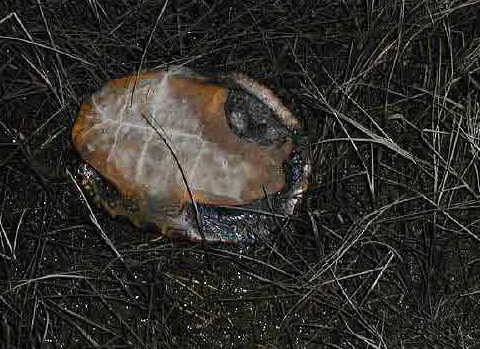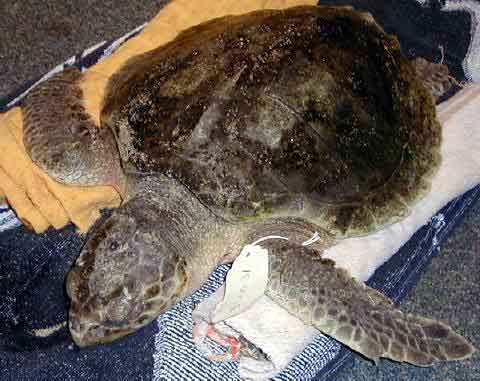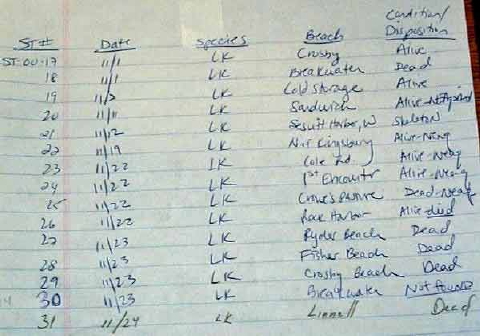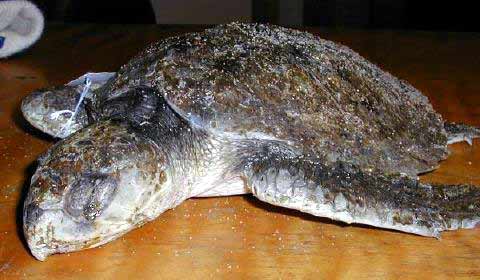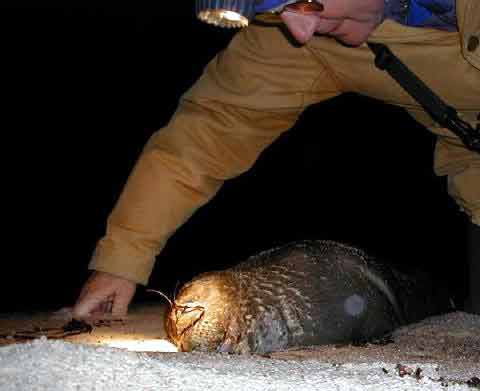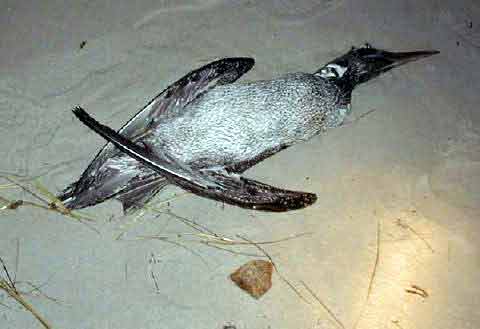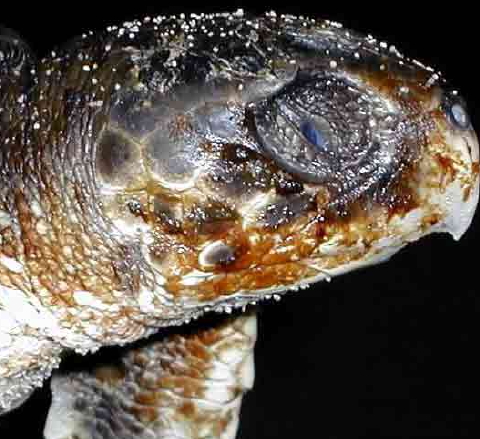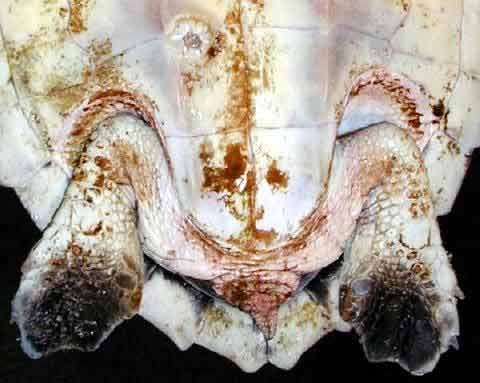Miracle Kemp’s Ridley Rescued at Duck Harbor
The Cape was cold and blue last week as wave after wave of Kemp’s ridleys washed ashore frozen dead. Internal body temperatures plunged to 32 degrees, as icy slush began to form along the shoreline. We knew no ridleys could survive these Arctic conditions, and only a miracle could save any Kemp’s still lingering in the bay. Well, the weather broke. We had a few days of moderate temperatures and gentle winds. And a miracle came to the Duck Harbor beach, bringing four live Kemp’s ridley sea turtles along with it.
Biologist Kathy Tuxbury Documents Kemp’s Ridley Rescue
Kathy Tuxbury, the research biologist at Wellfleet Bay, discovered the first turtle in the incoming tide at 11:15 this morning. A nice size juvenile at 30.3 centimeters carapace length and 3.7 kilograms weight, she was quite lively and threatened to nip Kathy as she rescued her from the bay. Her body temperature registered a surprisingly warm 46 degrees, but her breathing was raspy and fast. So, we decided on an immediate transport to the New England Aquarium for more aggressive intervention.
Cape Resident Rescues Cold-Stunned Ridley at Duck Harbor
As we prepared the turtle for transport, a resident walking the beach south of Kathy’s find brought in another live ridley from Duck Harbor. Nearly three centimeters bigger than the earlier turtle and weighing 4.1 kilograms, she too seemed surprisingly well and sported an internal body temperature of 51.6 degrees. She joined the first turtle in an ambulance run to the Sagamore Bridge rotary for relay to the New England Aquarium in Boston.
Don Lewis Examines Cold-Stunned Kemp’s Ridley Sea Turtle
By the time I got back from the turtle relay, Kathy had recovered another live Kemp’s ridley from the afternoon high tide just north of the first two turtles. This one was considerably smaller at 26.65 centimeters and only 2.7 kilograms. Yet, she too had a 48.5 degree body temperature and seemed in fairly good condition — for this time of year.
Educator Amy Kiebala Ferreira, Students and Ridley
A phone call alerted us to another ridley immediately in front of the Duck Harbor parking lot. Amy Kiebala, the Sanctuary’s children education coordinator, raced her team of students to the north Wellfleet beach to rescue this turtle: 31.8 centimeters long and weighing 4.1 kilograms.
Don Lewis and Miracle Kemp’s Ridley at Duck Harbor Sunset
We’re counting our blessings tonight: four live Kemp’s ridleys, the rarest sea turtle in the world, at least a week beyond any reasonable hope of finding another one alive in Cape Cod Bay. We’re doing a lot of quick thinking, too. How could these critters have survived last week’s frigid conditions. Was there a warm sink somewhere off Wellfleet in which these turtles were able to hunker down and avoid freezing? Or did these ridleys mysteriously snap back from the ~ 32 degree internal body temperatures we recorded around 23/24/25 November? Whatever the reason, we’re not looking a gift horse in the mouth. But we are still looking. Tomorrow morning sea turtle patrols will hit Wellfleet and Truro beaches around Duck Harbor, praying for a few more miracles.
